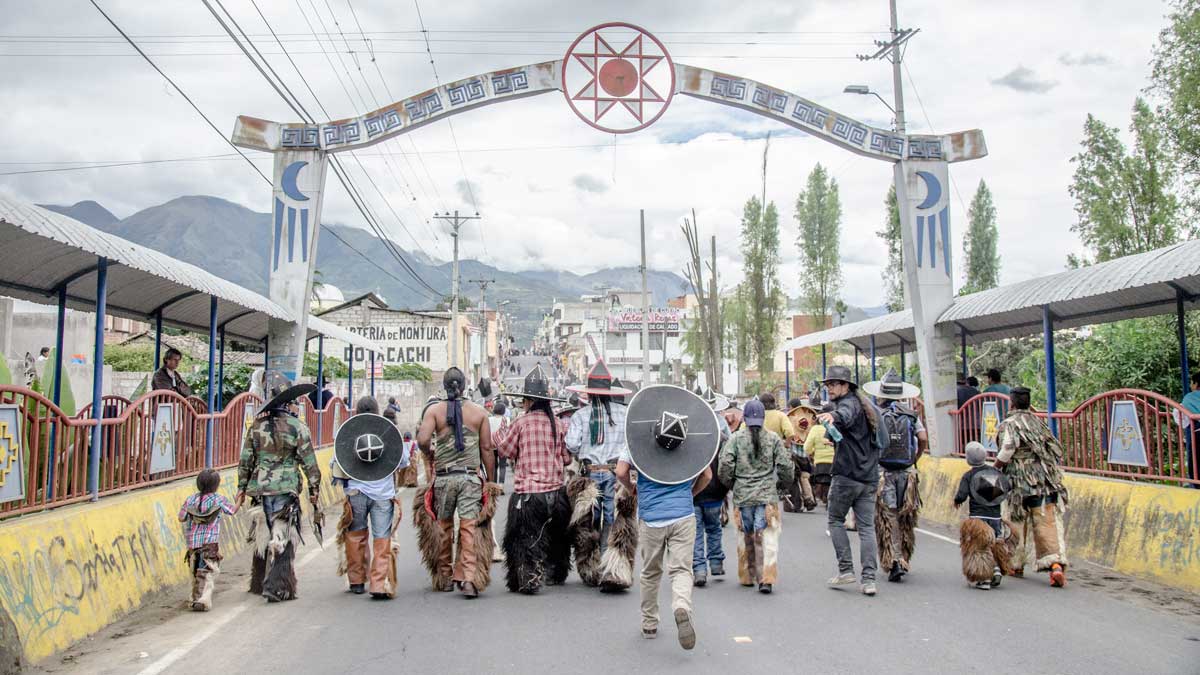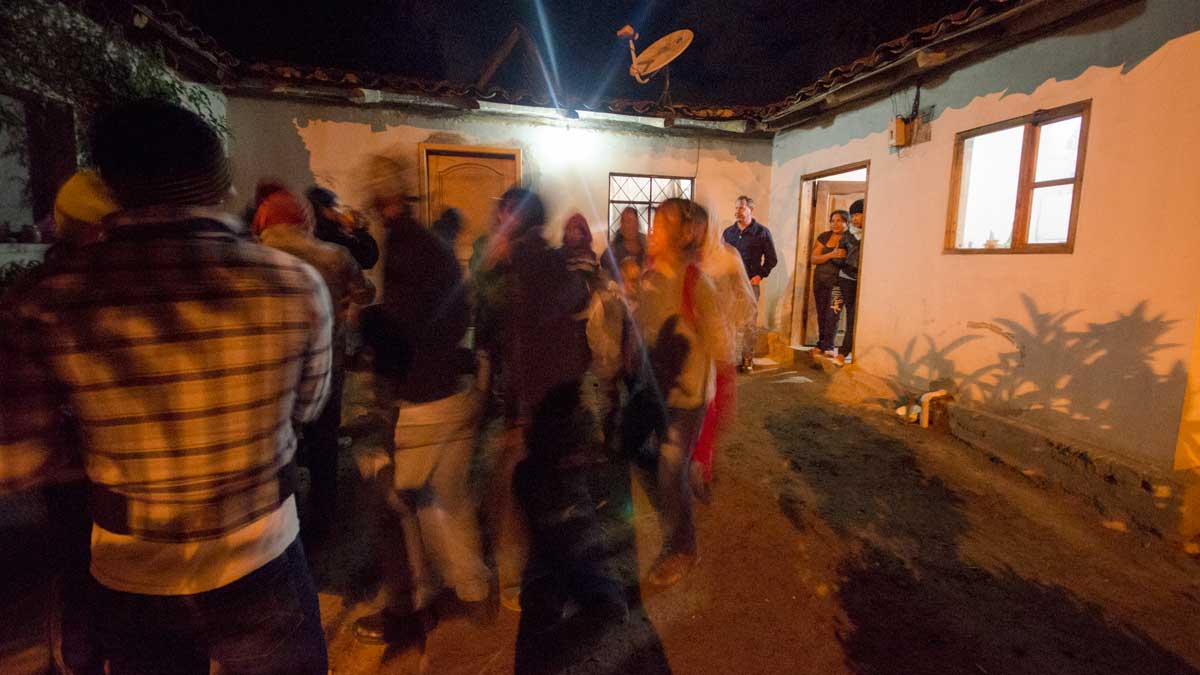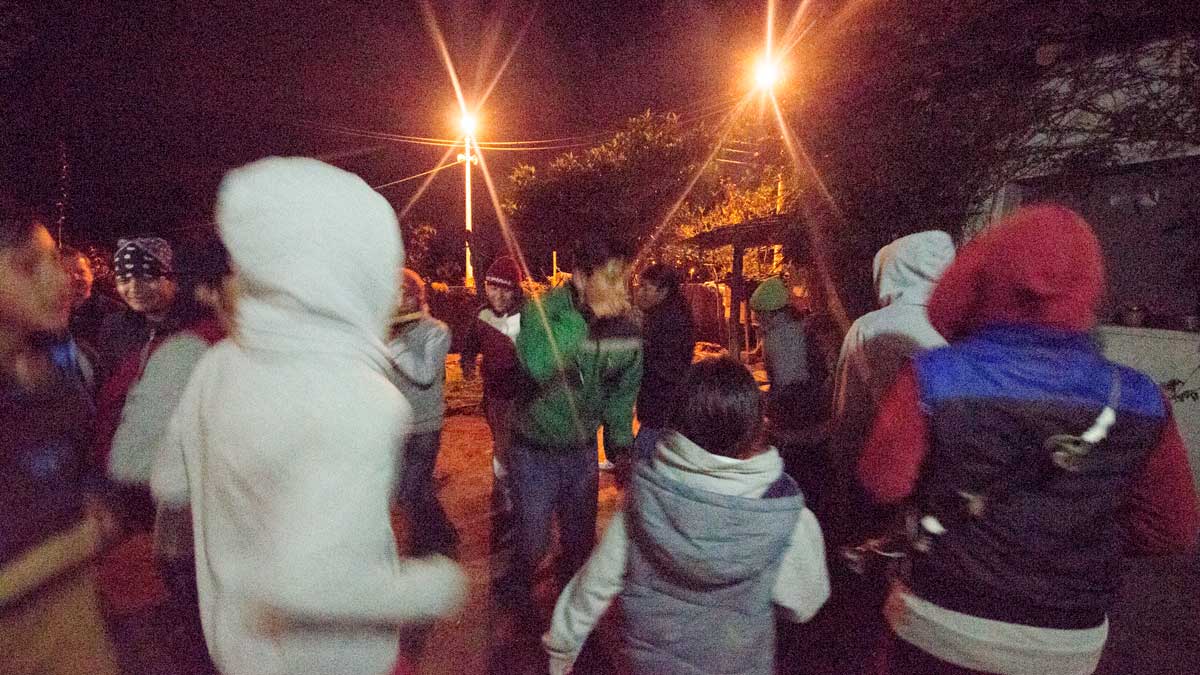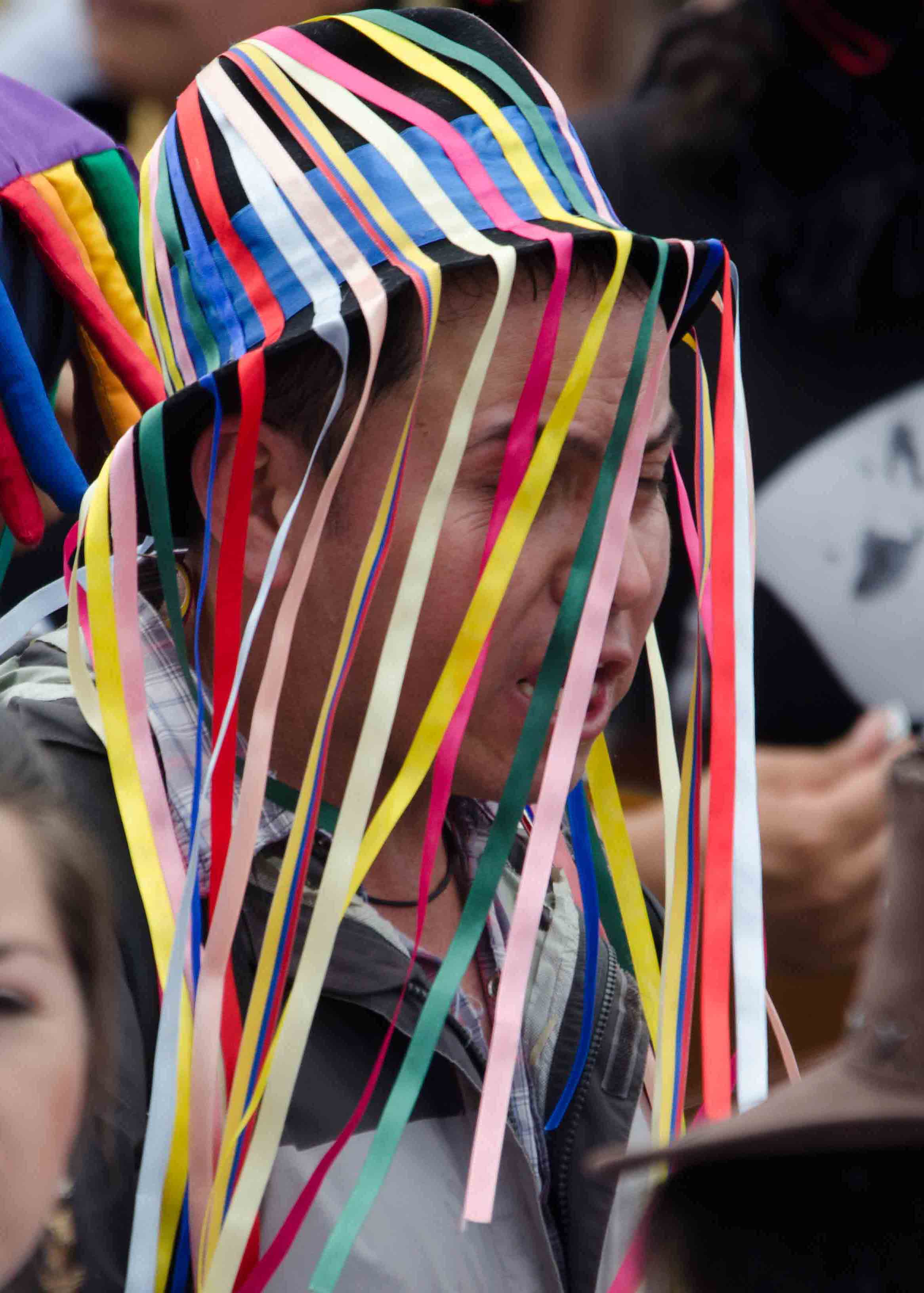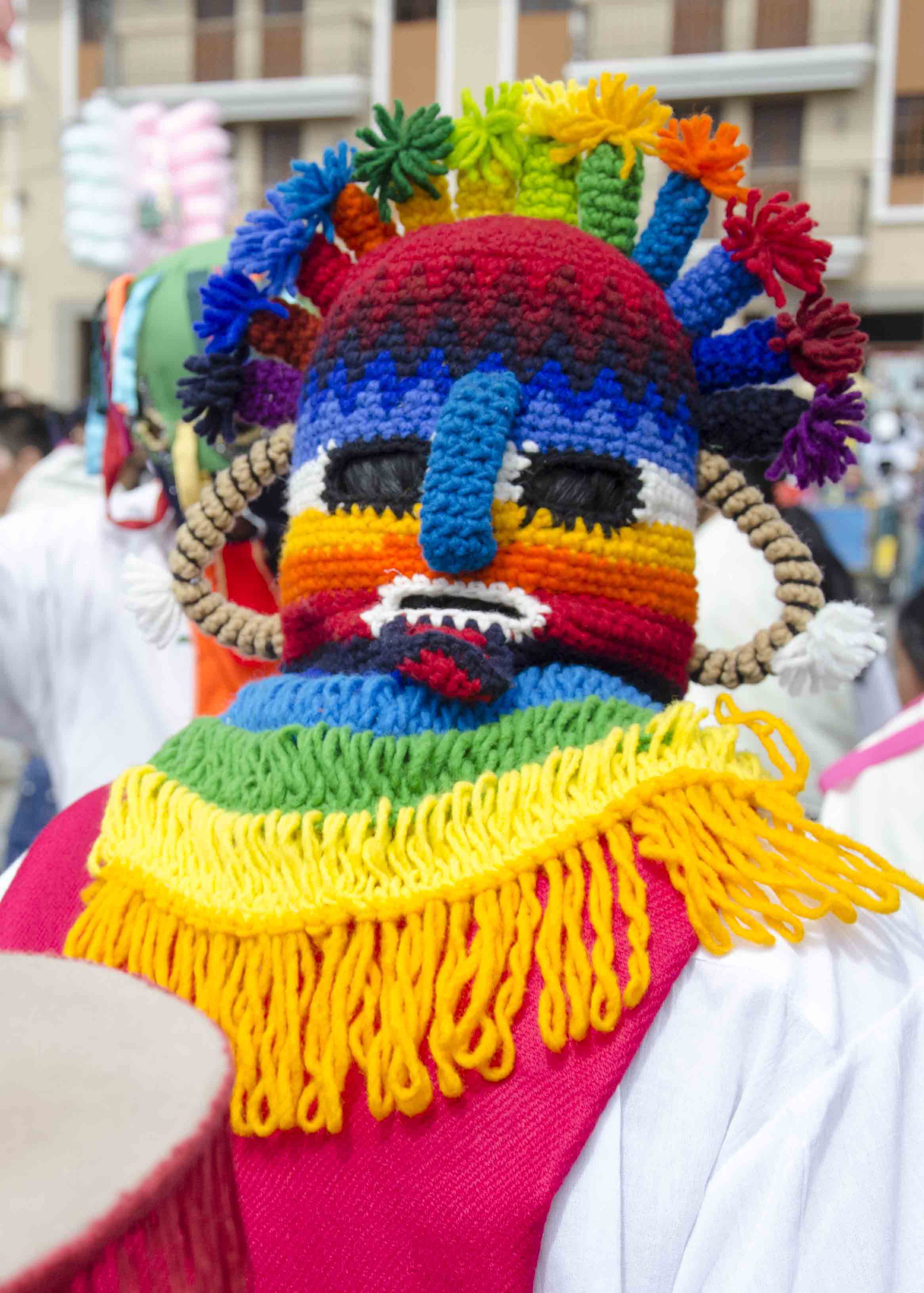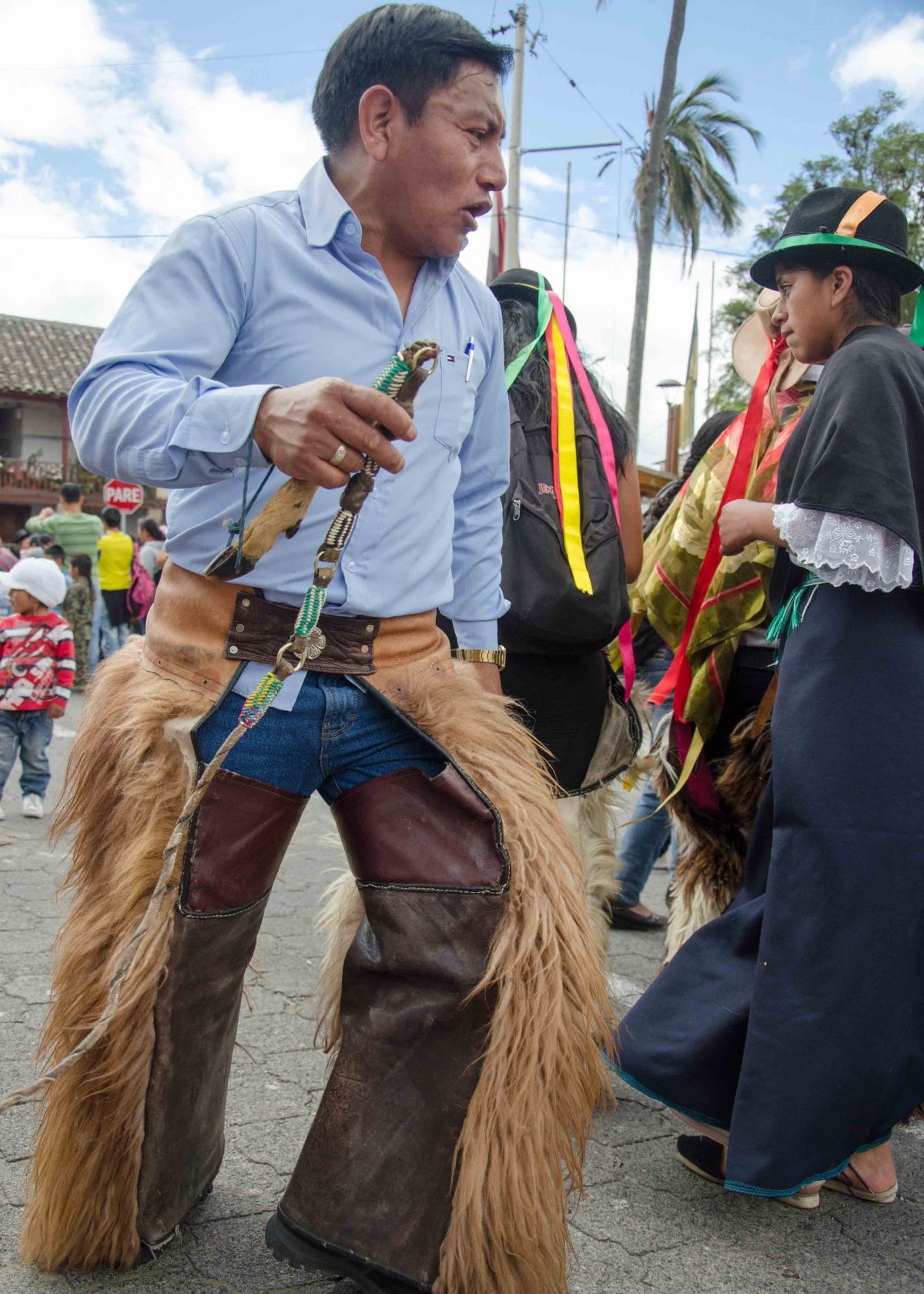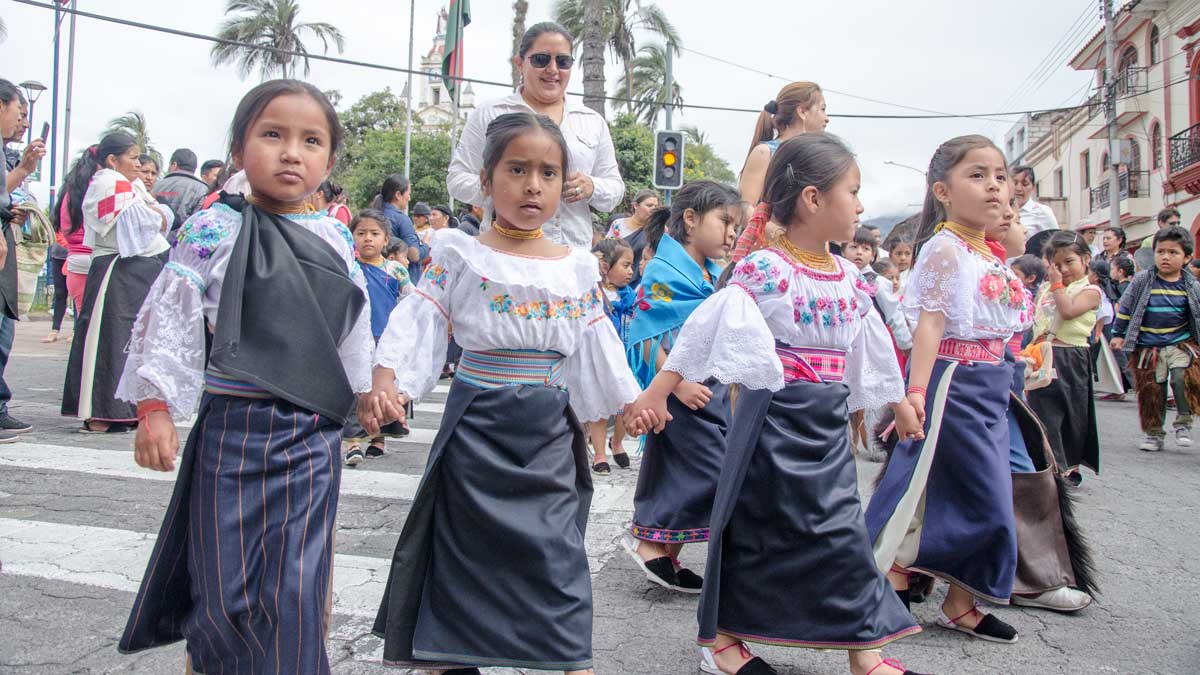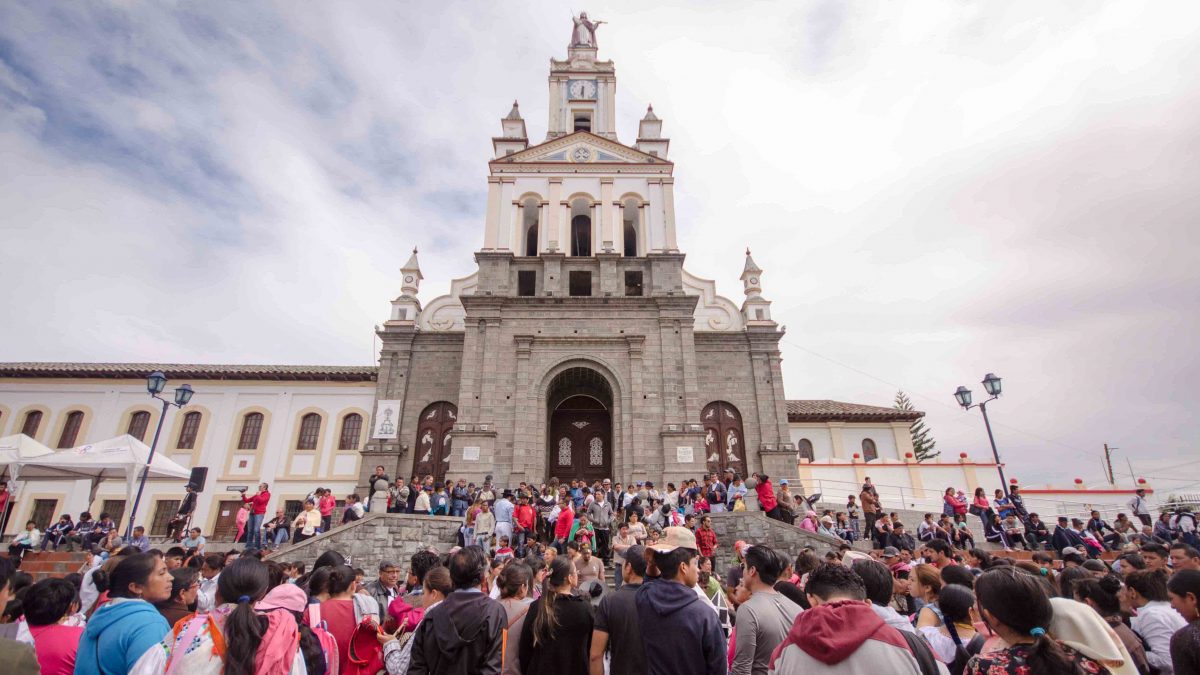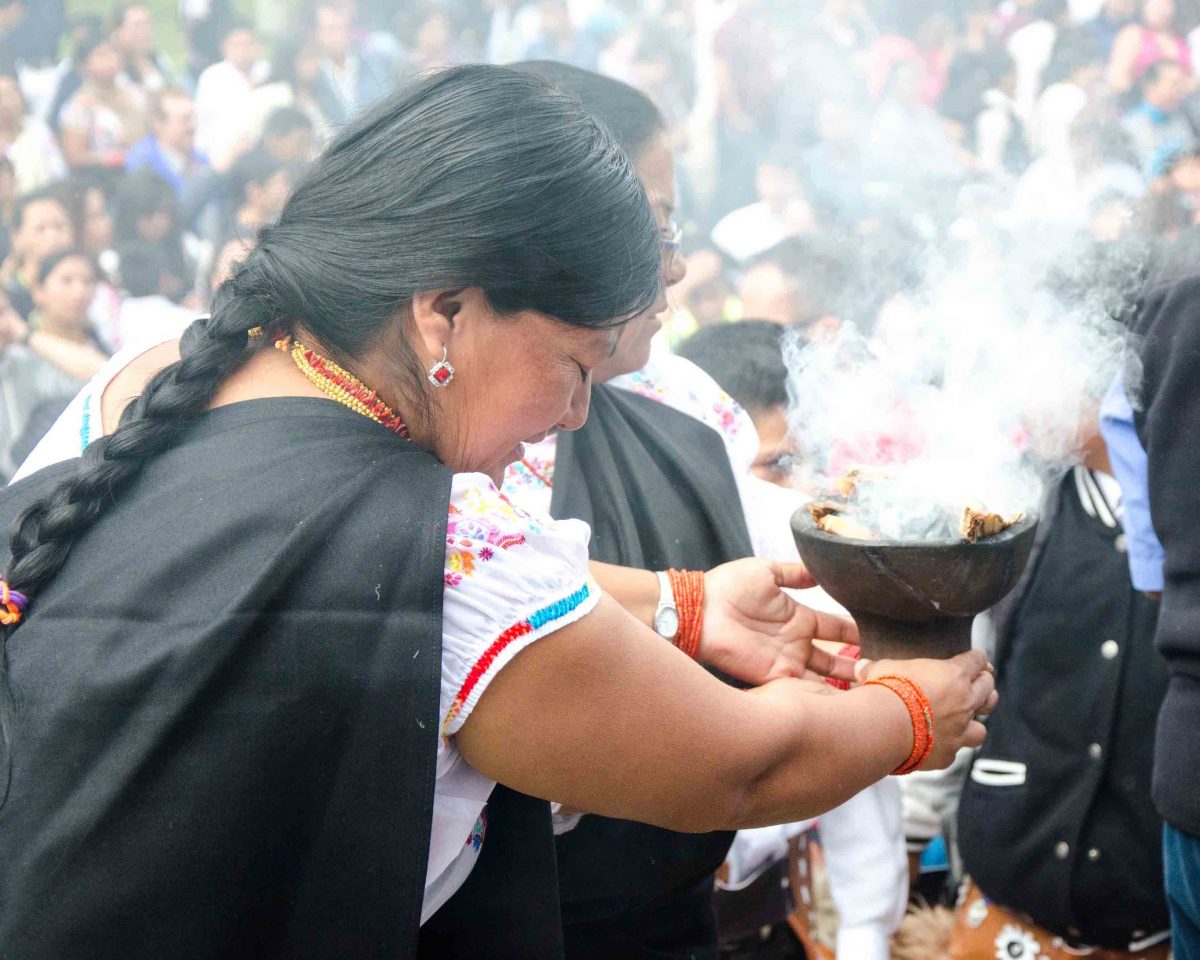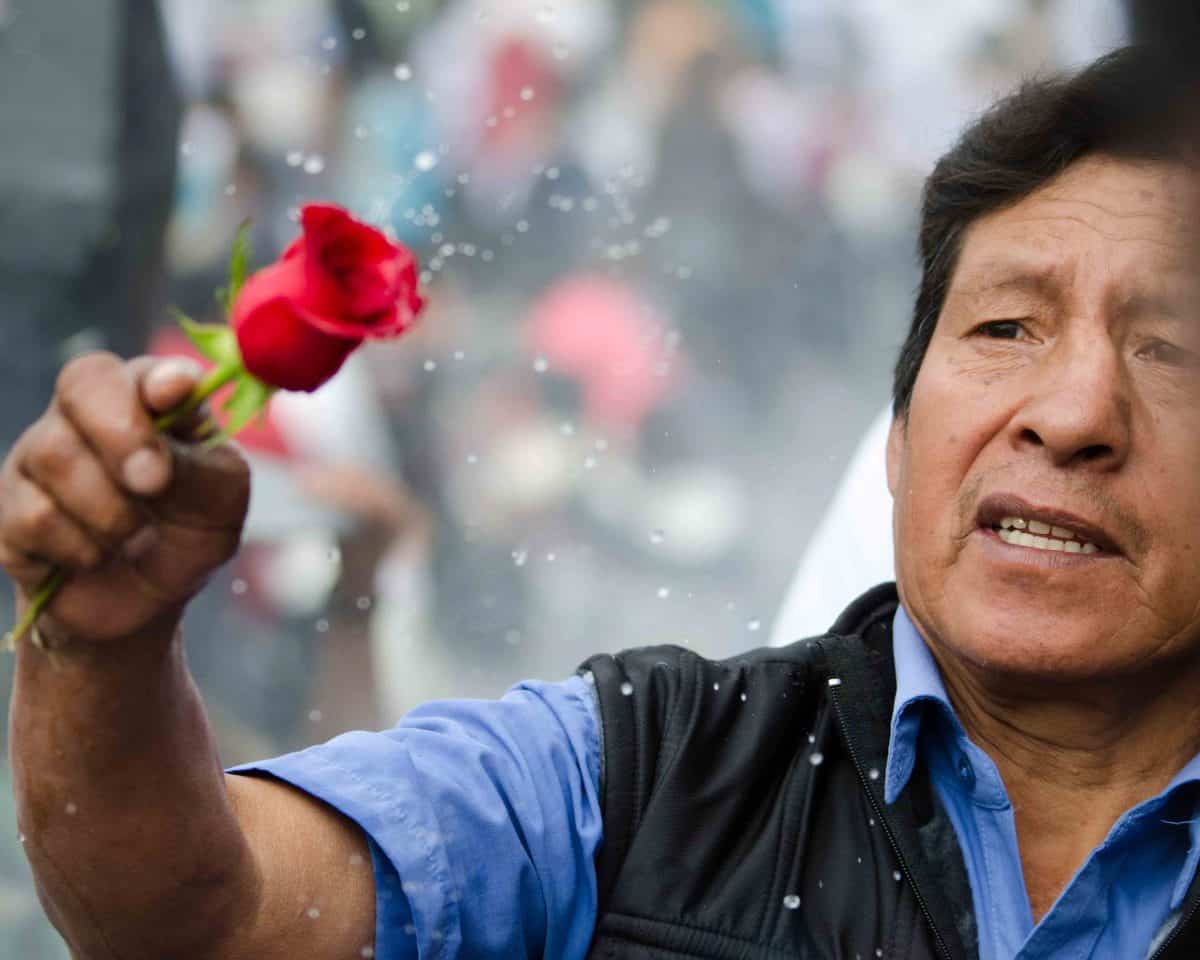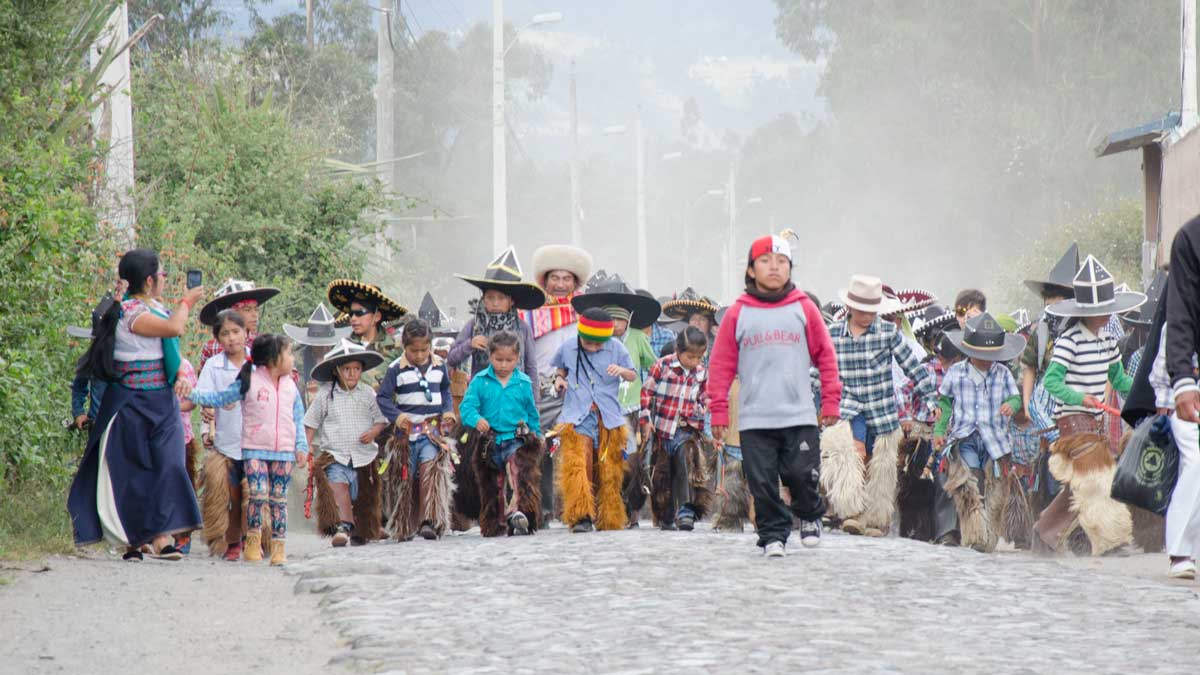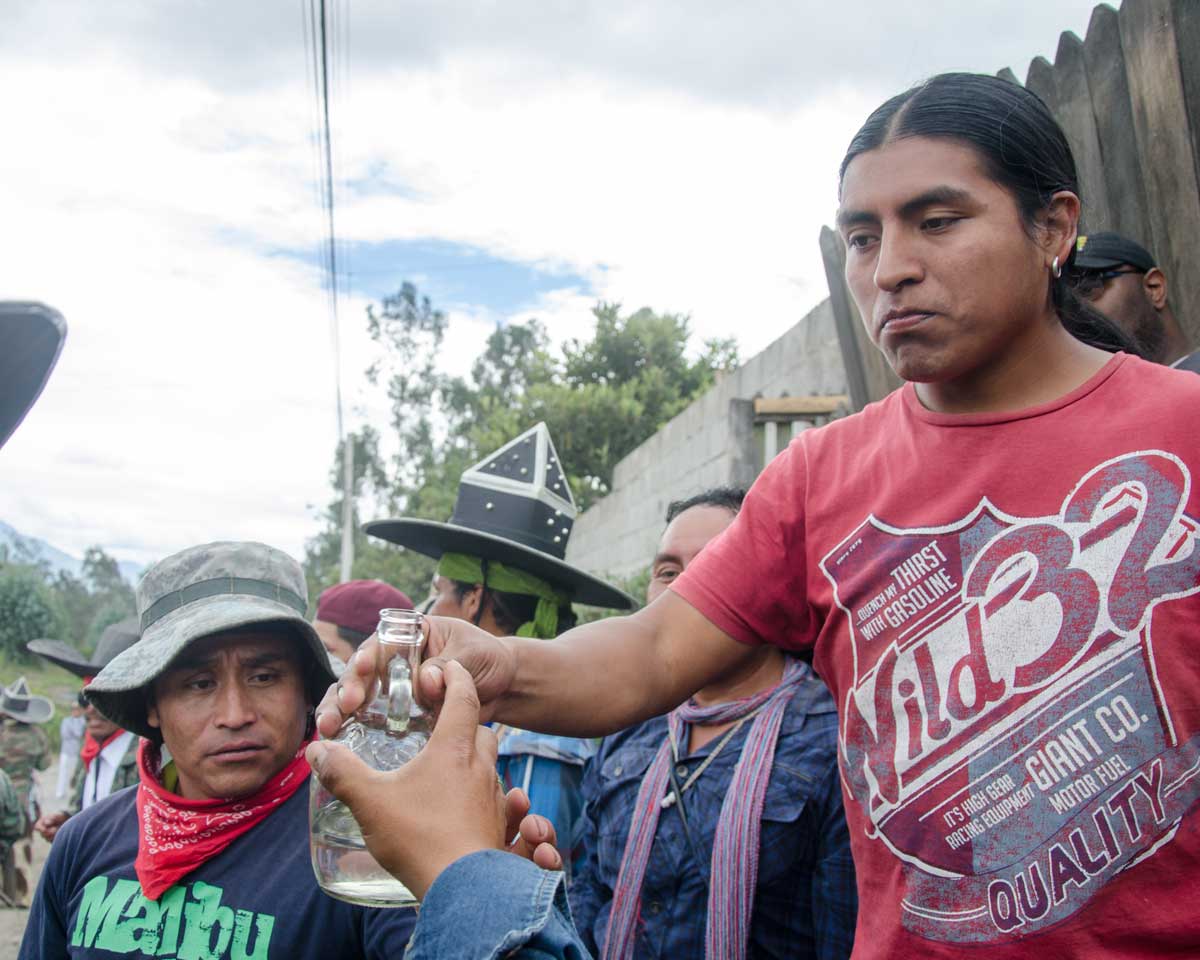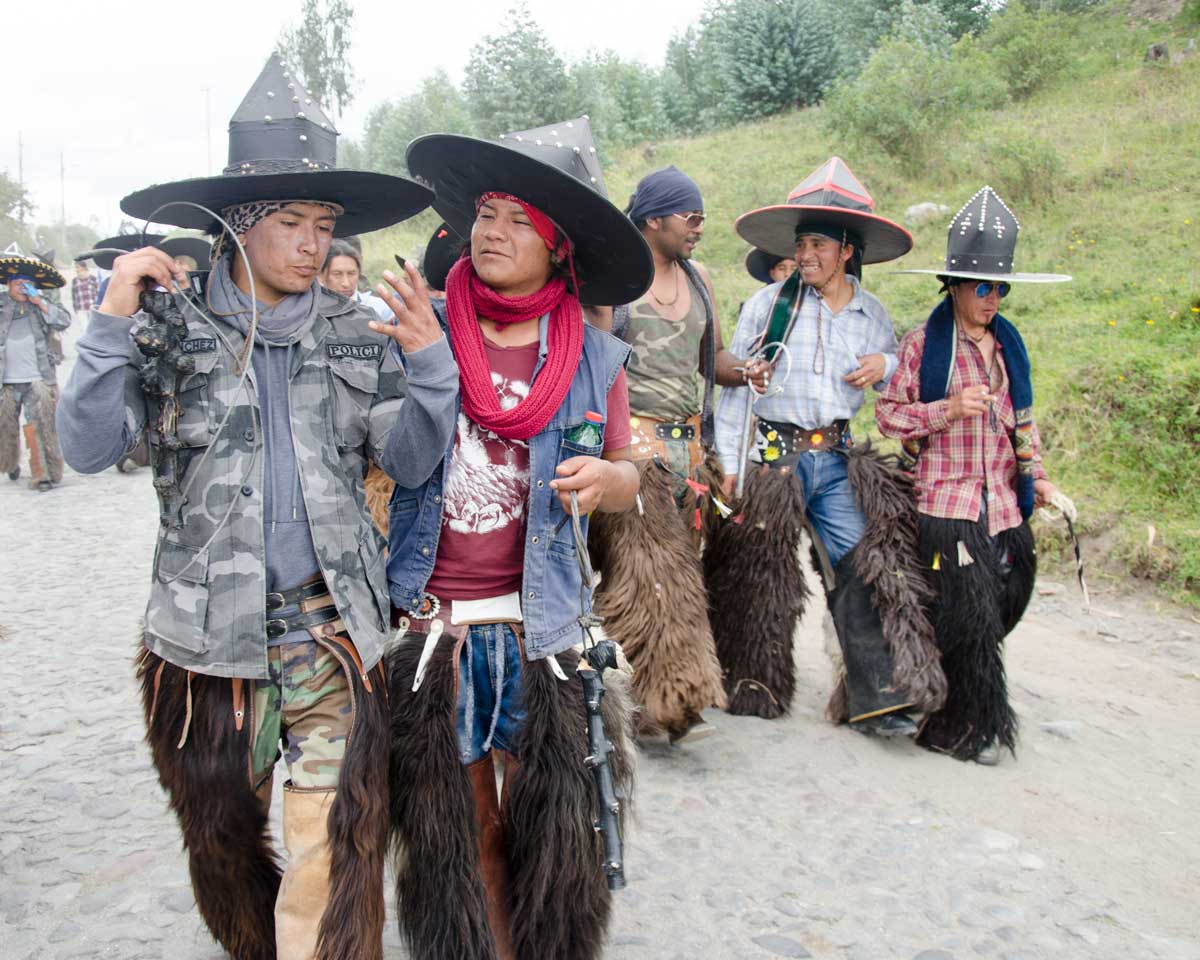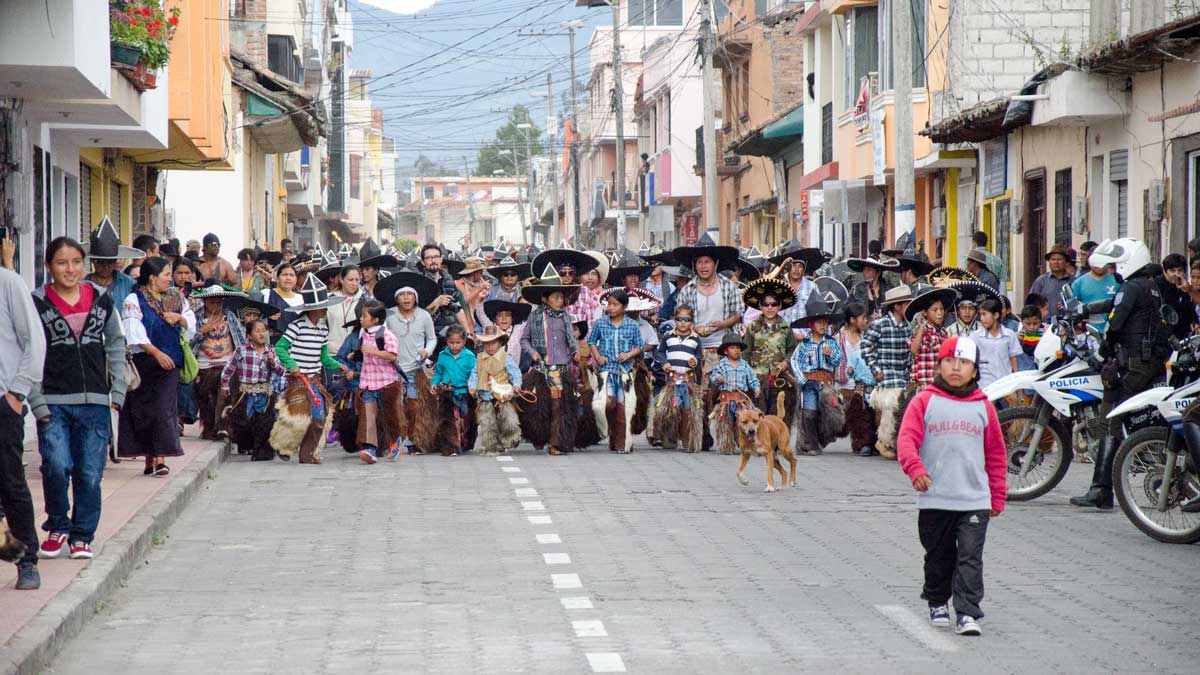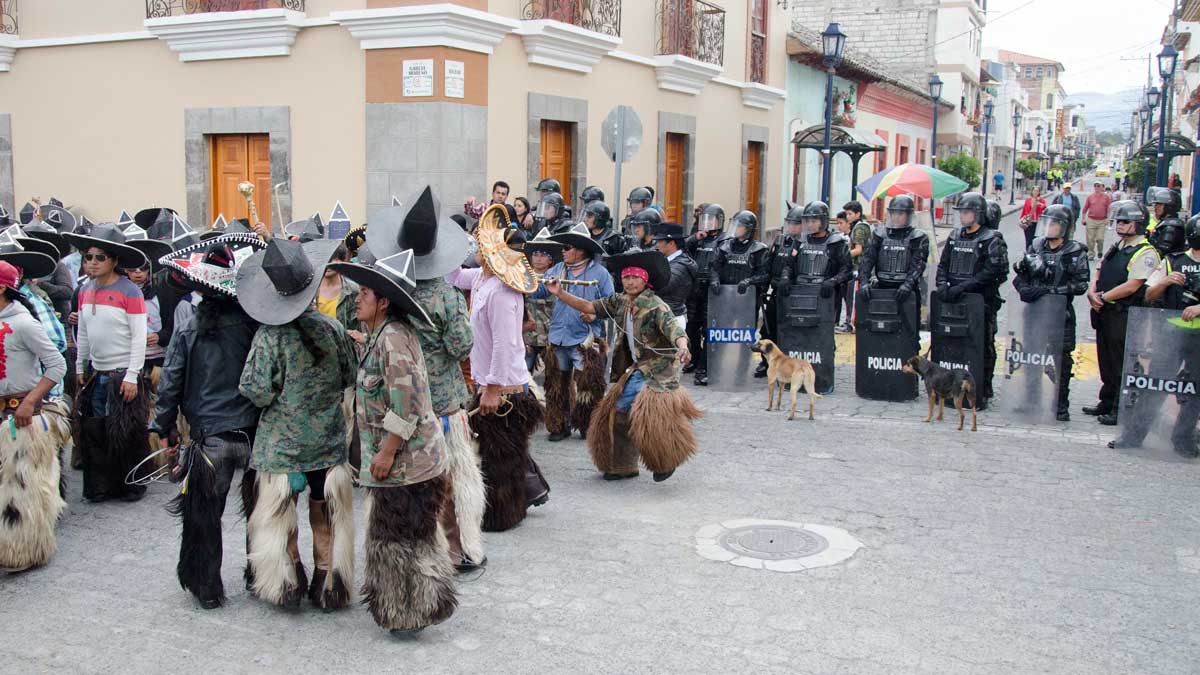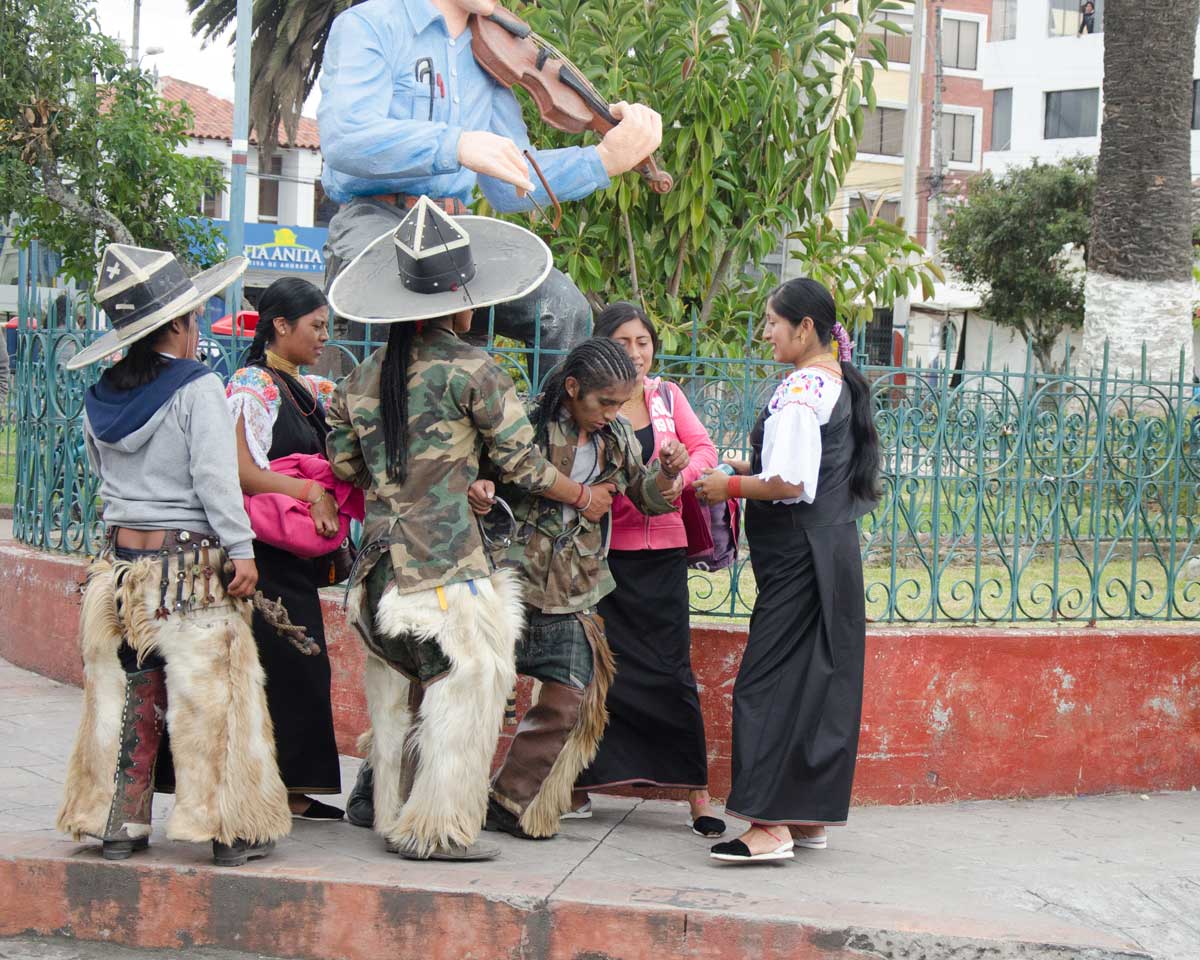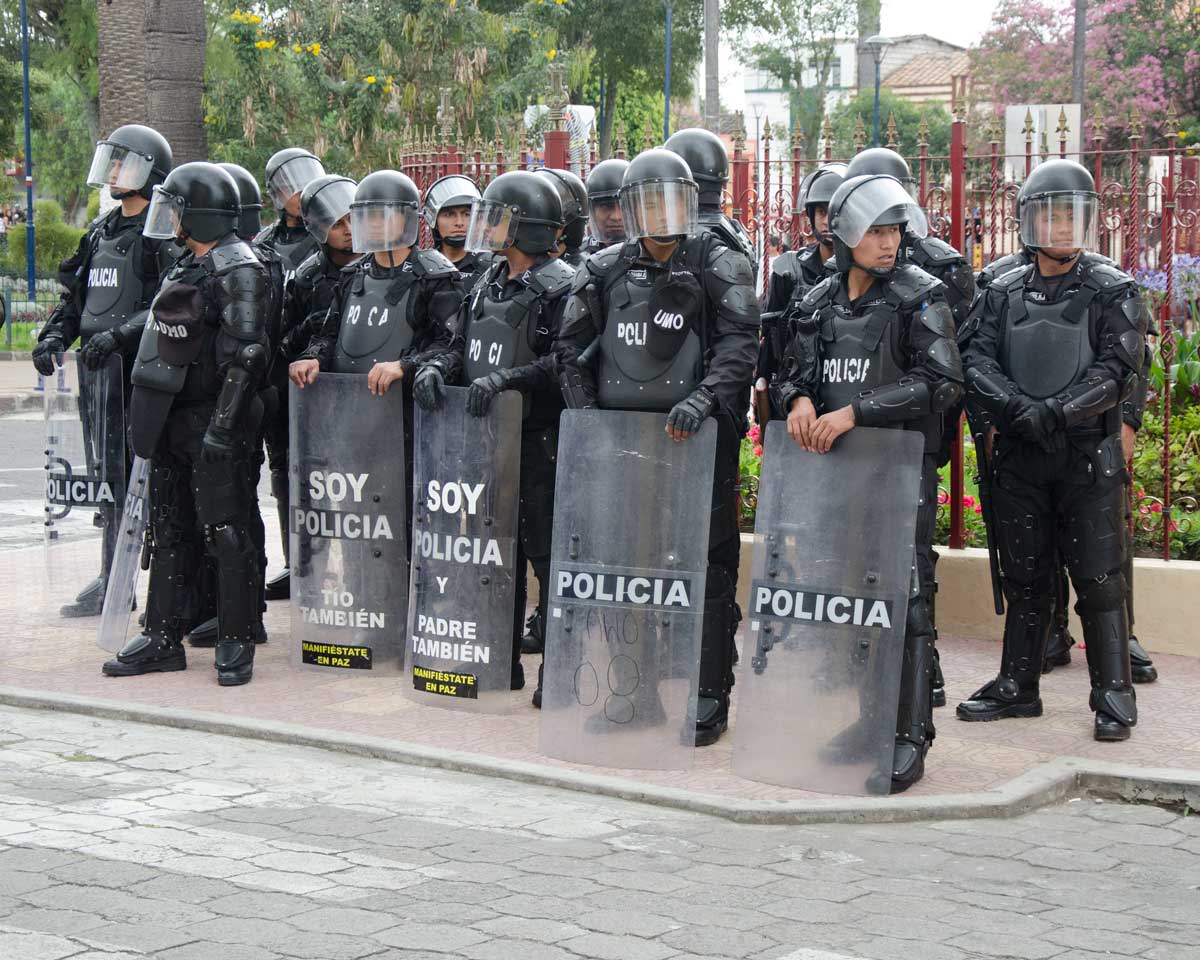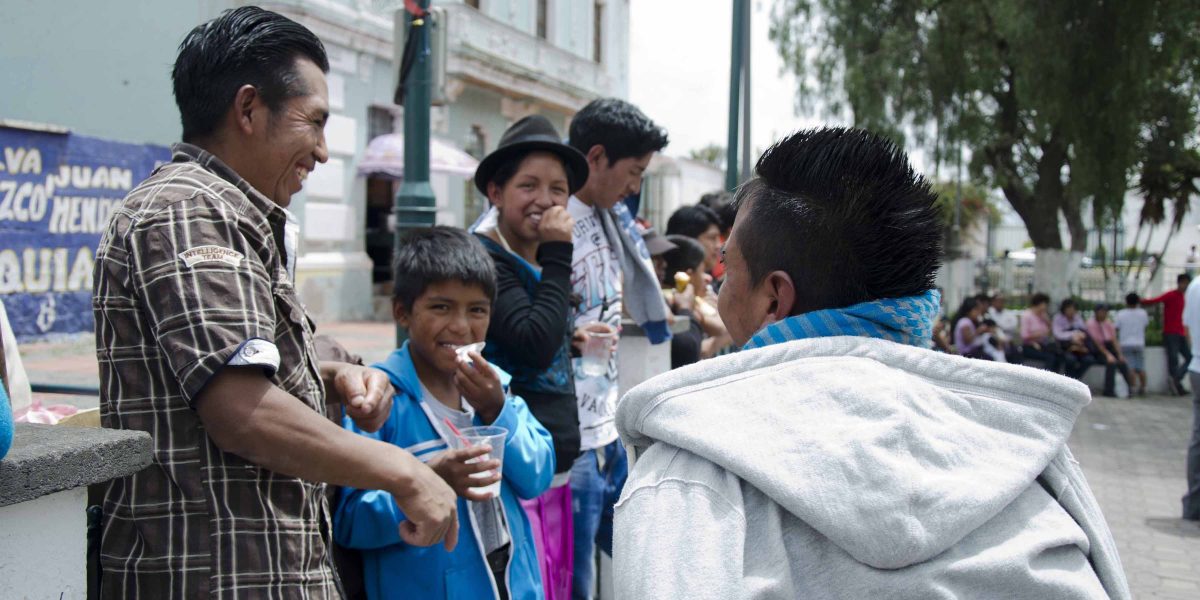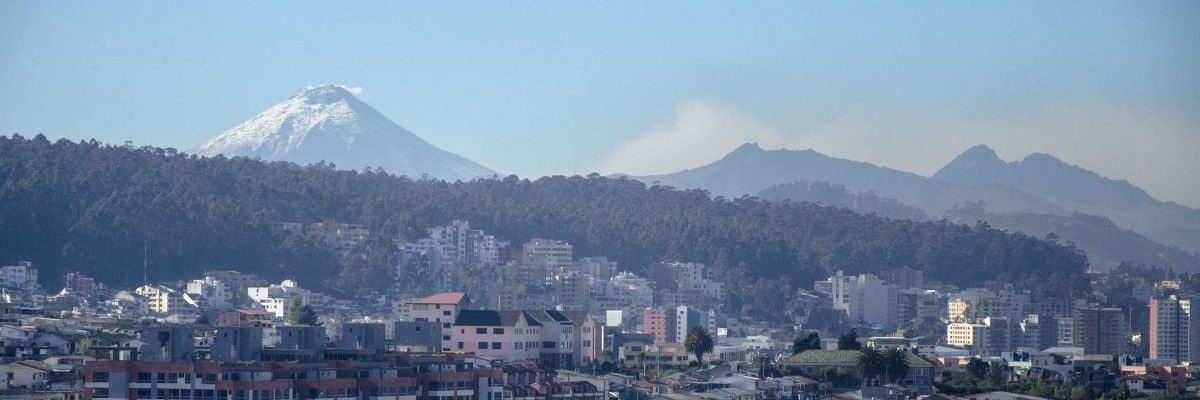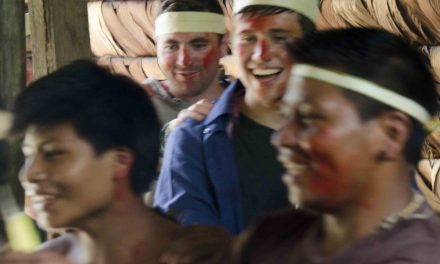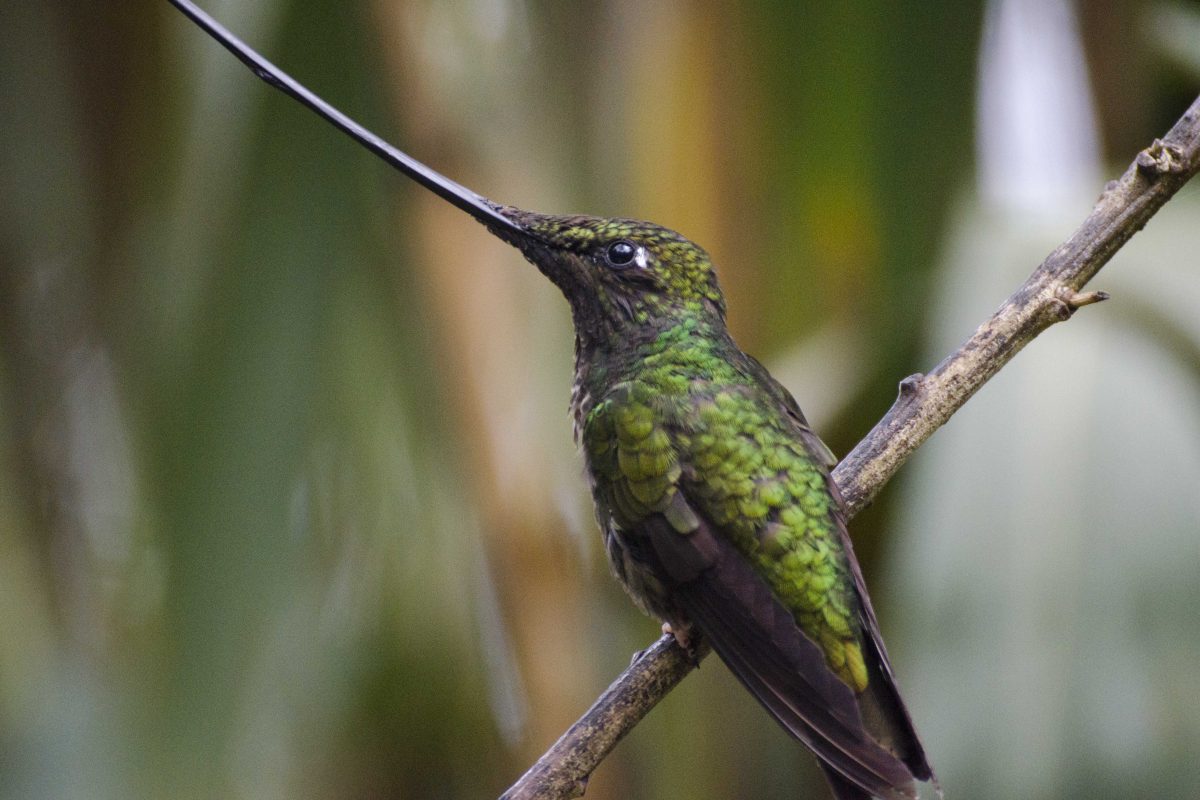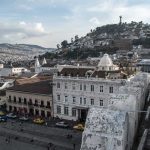A couple of years ago, I took friends to stay in the small town of Cotacachi for Inti Raymi. Our plans were simple, to enjoy the local festival as best as possible. Of course, as is pretty typical in Ecuador, I could find very little information about which days would be best for tourists to visit. Like most small towns in the Andes, Cotacachi doesn’t limit the celebration of Inti Raymi to a single day. Rather, events can take place during the entire month of June. We took a stab and reserved rooms at the Yellow Guest House for a couple of days around the solstice, June 22nd. It ended up being a very good plan.
Inti Raymi in Cotocachi
I had stayed at the Yellow Guest House once before and had already met the young couple that managed this small but comfortable hostel. The husband, Marco, is from the area and invited us to join his friends and family for many of the festivities. In fact, Marco knew far more about what to expect on these days than the owner of the hostel who I had contacted a few weeks before. He’s one of the reasons I highly suggest hiring local guides when it comes to festivals. The closer the guide is to the community, the better the experience for all.
Intiraymi and the Solstice, June 22nd
We learned from Marco that the actual day of the solstice, June 22nd, is reserved for small community rituals. First, everyone takes the time to bathe in sacred waters. Usually, this takes place where a waterfall or cascade makes a natural pond. In a few locations, people have built special bathing pools. A great example is found along the hiking trail at Laguna Cuicocha. This process is an important part of cleansing oneself both physically and spiritually for the rituals to come. Some families bathe during the day but most go out late in the evening, near midnight.
El Zapateado
Before they head out, the men in the neighborhood gather at a pre-determined house in the community. They dance in a circle, pounding their feet, chanting in rhythm, all while one or two people play musical instruments. Called the Zapateado, this dance is typical of Inti Raymi. However, each neighborhood of Cotacachi has practiced its own beat for centuries. No two dances are exactly alike.
For some reason, my friend Joann and I were welcome to join the dance. No native women took part but we were encouraged to join the circle of men along with our fellow tourist, Jim. We took turns stomping and dancing for what seemed like hours. When offered a drink from a comunal cup of local liquor, we took part. We learned to swig what we wanted to drink, then toss any remaining drops to the ground, before handing back the glass to be refilled and handed to the next person. We joined the group as they visited house after house, gathering more dancers and onlookers along the way.
A little before midnight, we thanked Marco and headed back for the night. We wanted to be ready for a fresh start the next morning. The drinking had also reached a point that I was uncomfortable. While tourists are often welcome, its a good idea to know when its time to leave.
School Children’s Taking of the Plaza
On the following day, several communities around Cotacachi participated in the school children’s «Taking of the Plaza.» This tradition harks back to pre-colonial times before the word plaza ever existed. Different groups in the community take turns coming into the central plaza to zapatear, just as they did the night before at the various homes in their neighborhoods.
On the children’s day, each school and preschool in the area dances around Cotacachi’s central plaza. Children, parents, and teachers dress in local costumes. Characters typical of Andean celebrations, like Aya Huma, Aruchicos, and Los Tushuk.
To learn more about these characters, read our article about the Faces of Inti Raymi.
Each group sent individuals up to the steps of the church to be blessed. This was not a Catholic ceremony. There was no priest but leaders in the community blessed the recipients with water dashed from rosebuds and cleansed them in the smoke of palo santo.
Overall, the emotion of the day was joy. Smiles were everywhere. Children were happy and parents were overjoyed to watch their children take part in a procession that passes on the spirit of Inti Raymi to the next generation.
It was only after watching the official «Taking of the Plaza,» that I realized how very unique the children’s day was. Girls were everywhere, many dancing as actively as the boys. Women paraded alongside men. While certain roles were obviously male only, like Aya Huma, there was no sense of segregation. This was not the case on the following day.
Taking of the Plaza, Cotacachi
After the exciting day watching school children in colorful costumes, I looked forward to seeing a similar event on that Friday, the 24th of June. Marco invited us to walk in with his neighborhood so we headed out at about 9 am to meet up with some of the folks we had danced with two nights before.
We waited on a street corner near the outskirts of town. As they walked in, I could immediately tell that something was different. First, I only noticed a couple of women. And they were wlaking along the sides of the group, taking pictures with cellphones much like I was snapping photos with my camera. They were obviously not the participants of this day. Even the group of children was all boys.
Some of the men walking towards us were obviously drunk. Not just intoxicated but downright drunk. I wondered at their ability to get through this long day. Almost every man was dressed in plaid shirts or military camouflage accompanied by animal hide chaps called zamarros. Most wore hats made from black poster board and punched with silver metal brads to make different designs. Some hats bore crosses or letters but a couple displayed a swastika, a symbol I have never before seen in Ecuador. No one could explain to me why anyone would choose it as a symbol to wear on Inti Raymi.
History of Taking of the Plaza
Marco explained to me that his neighborhood had one hour to take their turn on the plaza. This didn’t make sense to me at first. He went on to say that centuries ago, the name «Taking of the Plaza» came from the actual battle or fight that would take place. Each community would send their best warriors who would fight to literally «Take the Plaza.» Furthermore, it was a bad omen if no blood was spilt. The ancient belief held that blood was necessary to bless the fields.
Only a few years past, a man was killed during the «Taking of the Plaza» in Cotacachi. Since that time, the police come in riot gear and closely watch the proceedings. If one neighborhood tries to enter the plaza before another is finished, the police are there to prevent any trouble from taking place. They control little else. As hundreds of men and boys entered the plaza, there was little music but lots of chanting. The feel was much darker and foreboding than the day before when the children had brightened the event with their smiling faces.
Photographing the Taking of the Plaza
This was even a difficult day to take photographs. This was not a day to approach the procession. Therefore, most of my shots were taken from a distance. We watched women try to help men barely able to walk. We saw other men swing weapons called cara huasca. While most looked harmless, some had a large stone tied to the end. They reminded me of primitive flails. Several of the drunkest men looked in danger of taking themselves out. I knew they could easily hit an innocent bystander if given the chance.
Some people hinted that fighting would likely take place in the streets later in the day. I thought it unlikely as the most aggressive men also seemed to be the ones drinking from flasks or open bottles. They would likely pass out before getting into too much trouble. But rather than find out, we decided to leave downtown Cotacachi for the rest of the day.
Are you planning on attending an Inti Raymi festival in Ecuador? Not all are created equal. Consider hiring a local guide to help you better understand how to enjoy yourself during the Festival of the Sun!
Envíanos una nota con algunos detalles de tu viaje. Le enviaremos una lista de guías que serían una buena opción.


